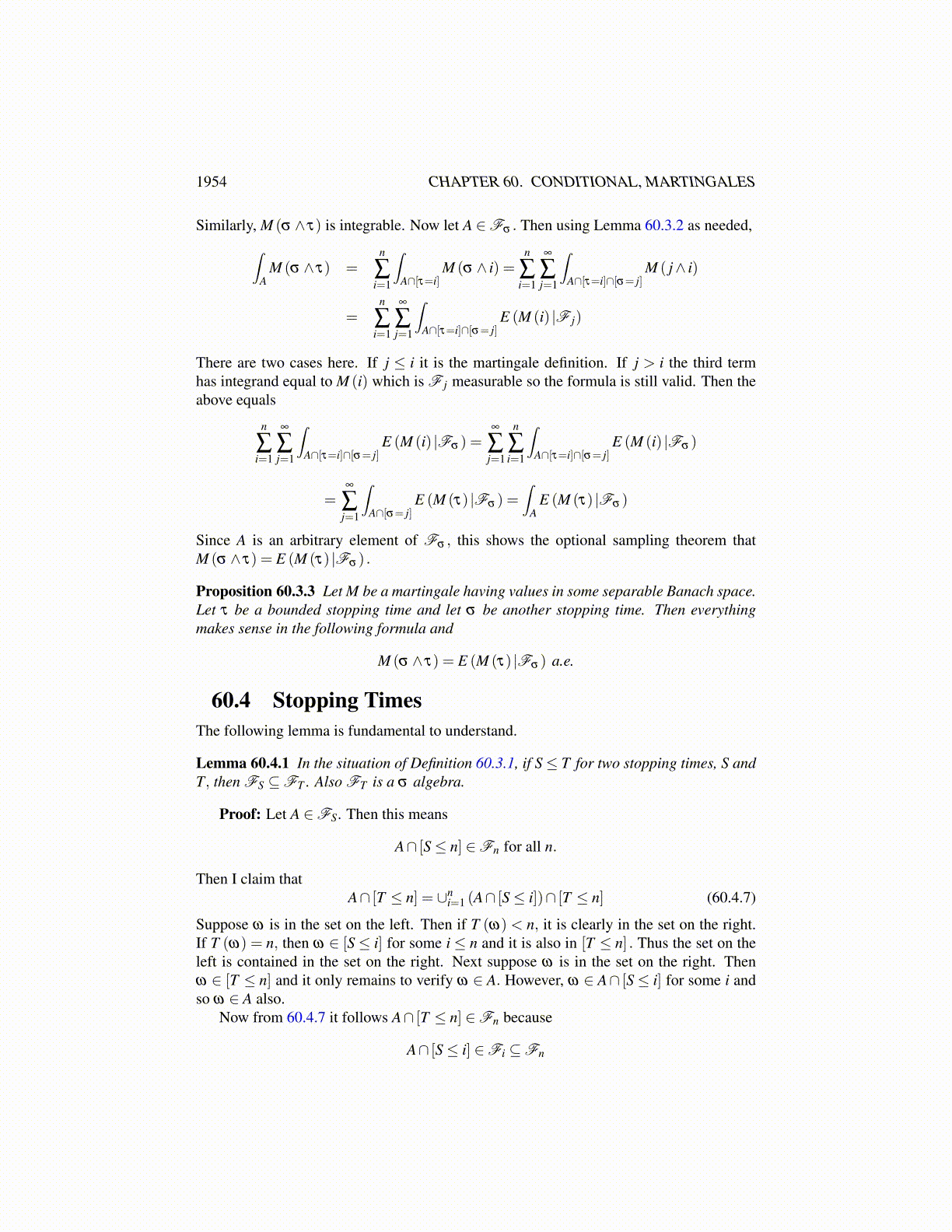
1954 CHAPTER 60. CONDITIONAL, MARTINGALES
of a stopping time T is that T is a measurable function and for such a process {Xn} ,ω →Xn∧T (ω) (ω) is also Fn measurable. In other words, by stopping with this stopping time,we preserve the Fn measurability. We want to have
X−1n∧T (O) ∈Fn
where O is an open set in some metric space where Xn has its values.
X−1n∧T (O) = [T ≤ n]∩
[ω : XT (ω) (ω) ∈ O
]∪ [T > n]∩ [ω : Xn (ω) ∈ O]
Now[T ≤ n]∩
[ω : XT (ω) (ω) ∈ O
]= ∪n
k=1 [T = k]∩ [Xk ∈ O]
To have this in Fn, we should have [T = k] ∈Fk. That is [T ≤ k] ∈Fk. Now once thisis done, [T > n] = [T ≤ n]C ∈Fn also. This motivates the following definition and showsthat the requirement that [T ≤ n] ∈Fn implies that ω → Xn∧T (ω) (ω) is Fn measurable ifthis is true of Xn.
Definition 60.3.1 Let (Ω,F ,P) be a probability space and let {Fn}∞
n=1 be an increasingsequence of σ algebras each contained in F . A stopping time is a measurable function, Twhich maps Ω to N,
T−1 (A) ∈F for all A ∈P (N) ,
such that for all n ∈ N,[T ≤ n] ∈Fn.
Note this is equivalent to saying[T = n] ∈Fn
because[T = n] = [T ≤ n]\ [T ≤ n−1] .
For T a stopping time define FT as follows.
FT ≡ {A ∈F : A∩ [T ≤ n] ∈Fn for all n ∈ N}
These sets in FT are referred to as “prior” to T .
Of course T has values i, a countable well ordered set of numbers, i ≤ i+1. Then wehave the following about the relation with stopping times and conditional expectations.
Lemma 60.3.2 Let X be in L1 (Ω). Then FT ∩ [T = i] = Fi ∩ [T = i] and E (X |FT ) =E (X |Fi) a.e. on the set [T = i] . Also if A ∈FT , then A∩ [T = i] ∈Fi ∩FT . Also FT ∩[T ≤ i] = Fi∩ [T ≤ i] and E (X |FT ) = E (X |Fi) a.e. on the set [T ≤ i] .
Proof: Let
1. Typical set in FT ∩ [T = i] is A∩ [T = i] where A ∈FT . Thus A∩ [T = i] = B ∈Fiso A∩ [T = i] = A∩ [T = i]∩ [T = i] = B∩ [T = i] ∈Fi∩ [T = i] .